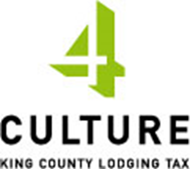Eastside Stories is our way of sharing Eastside history through the many events, people places and interesting bits of information that we collect at the Eastside Heritage Center. We hope you enjoy these stories and share them with friends and family.
Cities. Almost all of us on the Eastside today live in one. We may take our cities for granted, but they have not always existed—people had to create them. States are the foundation of the country, and counties are necessary subdivisions of states. Cities are, well, kind of optional.
When Finn Hill joined Kirkland in 2011, one of the last large bits of urban unincorporated area on the Eastside came under the benevolent arm of city hall. Most Eastsiders now live in one of 14 cities in the urbanized areas and five in the rural areas. The boundaries of cities often seem to make little sense, and they sit on top of a patchwork of school and other special districts.
If we were designing a system of governance from scratch we certainly would not end up with anything like the current map of the Eastside. So, how did we end up with our current array of cities?
Cities are formed when a group of residents petition their county government. Once a boundary for a proposed city is agreed upon, residents within that boundary vote on incorporation. Residents can also vote to annex to an existing city, if that city is willing to absorb them.
In the early days of the Eastside, pioneers had few expectations for government services, so cities were slow to form. It can be perfectly fine to live in unincorporated areas without city government. County government provides basic services, and other services are provided by special utility and fire districts and private associations.
Scene on Front Street in Issaquah circa 1910
The first wave of incorporations happened in the late 19th and early 20th centuries. Issaquah is the oldest city on the Eastside, dating back to 1892 (originally named Gilman). It was a coal mining town that made a successful transition to railroad work. Snoqualmie (1903), Bothell (1909) and North Bend (1909) all had their roots in the early railroad routes and as logging and agricultural commercial centers.
Kirkland, which incorporated in 1905, was slated to become the “Pittsburgh of the West.” By the time Peter Kirk’s big industrial plans fell through, Kirkland had become a good sized settlement, and it made sense to form a city. Redmond, had its roots as a timber and railroad center, and incorporated its growing downtown in 1912. The farming and railroad towns of Carnation and Duvall incorporated in 1912 and 1913, respectively.
In 1910, when the postcard was mailed, Redmond was big enough not only to have its own souvenir cards, but also a local post office to mail them from.
Then city formation on the Eastside ground to a halt for decades. Growth was slow, as mining and timber activity wound down and few new large industries moved to the still-remote area. Some larger settlements, like those around the mines of Newcastle, disbanded. Bellevue was still just a one-street village, and the vast commercial areas of Overlake were farms and forests. Not much need for new cities.
Then in the 1950s, the Eastside sprang to life.
The new bridge across Mercer Island opened the area to large scale homebuilding, and Bellevue began to resemble a real city. In 1953 Bellevue incorporated with just under 6,000 residents. Feeling Bellevue breathing down their necks, the Points Communities formed themselves into four separate cities: Clyde Hill (1953), Hunts Point (1955), Medina (1955), Yarrow Point (1959). And the tiny artists colony of Beaux Arts Village formed itself into a town in 1954.
Eugene Boyd and Phil Reilly celebrate the incorporation of Bellevue in 1953
Then another 35 years of quiet. Bellevue, Kirkland, Redmond, Issaquah and Bothell gradually annexed surrounding neighborhoods, but many pockets of residential area were perfectly happy with the benign neglect that county government offered.
But along came a less benign force: the Growth Management Act of 1989, which required extensive planning and encouraged higher density development. Nothing gets the attention of otherwise complacent citizens like the prospect of changes in land use, and within a few years, the Eastside had four more cities seeking to control their destiny: Woodinville (1993), Newcastle (1994), Kenmore (1998), Sammamish (1999).
In many respects, cities are the ultimate democratic institutions: groups of free citizens banding together to form a local government that will collect taxes from them and provide services they ask for. The chaotic looking map of the Eastside is the result of tens of thousands of individual decisions by Eastsiders about how they want to shape their neighborhoods. Individual cities take on the character of their residents over time and become unique places.
From chaos comes community.
All images from the collection of the Eastside Heritage Center. If you are interested in obtaining images from our collection, which has extensive holdings from Eastside cities, contact us at collections@eastsideheritagecenter.org
Learn more about the Eastside. Books available from Eastside Heritage Center include:
Lake Washington: The Eastside
Bellevue: the Post World War II Years
Our Town, Redmond
Medina
Hunts Point
Bellevue: Its First 100 Years
Our Mission To steward Eastside history by actively collecting, preserving, and interpreting documents and artifacts, and by promoting public involvement in and appreciation of this heritage through educational programming and community outreach.
Our Vision To be the leading organization that enhances community identity through the preservation and stewardship of the Eastside’s history.
Eastside Heritage Center is supported by 4 Culture











